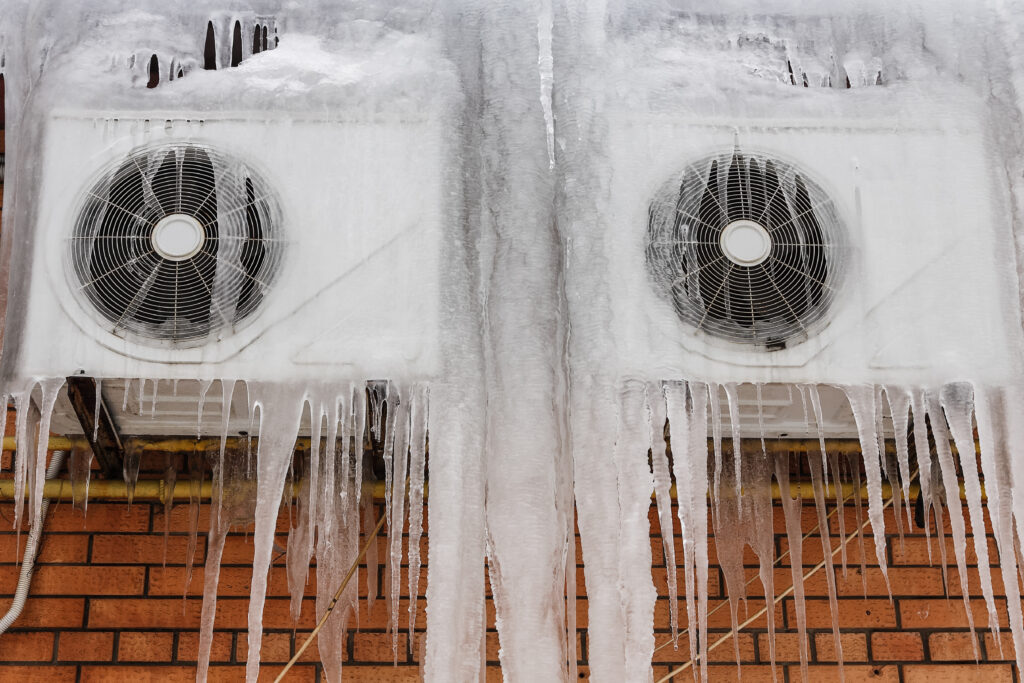What to Handle a Frozen AC Pipe - Critical Measures for Restoration
What to Handle a Frozen AC Pipe - Critical Measures for Restoration
Blog Article
Presented here below you can get a bunch of great points on the subject of What Do I Do If My AC Pipe Is Frozen.

Intro
Uncovering that your air conditioning pipeline is iced up can be concerning, particularly throughout warm summertime when you rely on your ac system the most. Comprehending what to do in such a scenario is critical to stop more damages to your cooling system and ensure your comfort inside your home.
Understanding the Causes
A number of elements can contribute to the cold of an a/c pipeline. Recognizing these causes can help you resolve the problem effectively.
Absence of Airflow
One common source of a frozen AC pipeline is inadequate air flow. When the air flow over the evaporator coil is limited, it can cause the coil to go down below freezing temperature, leading to ice development on the pipeline.
Low Refrigerant Levels
Insufficient cooling agent degrees in your AC system can likewise result in a frozen pipe. Reduced cooling agent levels can trigger the pressure in the system to go down, causing the freezing of dampness on the evaporator coil.
Cold Weather Conditions
In cooler climates, freezing temperature levels outside can contribute to the cold of air conditioning pipelines. If your a/c unit is not appropriately protected or if there are leakages in the ductwork, cold air can infiltrate the system, triggering the pipeline to freeze.
Dirty Air Filters
Unclean or clogged air filters can restrict air flow in your AC system, bring about various issues, including a frozen pipe. It's essential to replace or clean your air filters on a regular basis to guarantee correct air flow and protect against ice buildup.
Indicators of a Frozen A/c Pipe
Acknowledging the indicators of a frozen a/c pipeline is essential for timely action.
Minimized Airflow
If you see a substantial reduction in airflow from your vents, it could show a frozen pipeline.
Ice Buildup on the Pipe
Noticeable ice accumulation on the cooling agent line or the evaporator coil is a clear indication of a frozen a/c pipeline.
Weird Sounds from the Unit
Unusual noises, such as hissing or bubbling, coming from your AC device can signify that there's ice present on the pipeline.
Immediate Actions to Take
When confronted with an icy air conditioning pipe, it's necessary to act swiftly to stop further damage to your cooling system.
Turning off the AC
The primary step is to switch off your ac system to prevent the system from running and exacerbating the issue.
Looking for Blockages
Examine the location around the indoor device for any obstructions that may be obstructing airflow, such as furnishings or curtains.
Thawing the Pipe
You can make use of mild methods like positioning towels soaked in cozy water around the frozen pipeline to help thaw it slowly.
Preventive Measures
Taking preventive measures can aid prevent future incidents of a frozen air conditioner pipe.
When DIY Methods Fail
If your attempts to thaw the pipe or address various other concerns are not successful, it's time to contact a specialist.
Importance of Hiring a Professional HVAC Technician
A licensed HVAC technician has the proficiency and devices essential to identify and fix problems with your a/c system safely and efficiently.
Routine Maintenance Checks
Arrange regular maintenance talk to an expert HVAC professional to make sure that your air conditioning system is running efficiently.
Changing Air Filters
Consistently replace or cleanse your air filters to avoid air movement constraints and maintain optimal efficiency.
Protecting Exposed Pipes
If your air conditioning pipes are exposed to cool temperature levels, take into consideration protecting them to prevent freezing throughout winter season.
Looking For Professional Help
If DIY techniques fail to settle the problem or if you're unsure concerning exactly how to proceed, it's best to look for support from a qualified HVAC specialist.
Verdict
Handling an icy air conditioning pipeline can be a discouraging experience, yet knowing just how to react can help decrease damages and bring back comfort to your home. By comprehending the reasons, recognizing the indications, and taking punctual activity, you can successfully resolve the issue and protect against future occurrences.
Frozen AC Line: Why It Happens & What To Do About It
A frozen AC line can be a rather peculiar sight in a place like Phoenix, Arizona where nothing ever freezes. In this post, we’ll discuss what makes an air conditioner line frozen – and what you can do about it.
Dirty Air Filters
Did you know that you should be cleaning or replacing your air filters on a monthly basis? Failing to do this can result in airflow issues that, in turn, cause your evaporator coils and lines to freeze over. You’ll notice a buildup of ice on both components, although the buildup on your pipes will, of course, be more evident unless you open your air condition up to reveal the coils.
What To Do About It
Give your air filter a good cleaning if it’s reusable. If not, replace the filter outright. Next, switch your air conditioner’s fan setting on and leave it there for 2-3 hours. This will draw warm air in, helping to thaw your evaporator coil. You can also check out this article for some tips on cleaning the coils themselves if you’d like to speed the process up. Before you switch the unit back to its normal state, make sure the supply vents are completely unobstructed and free of dust or other debris.
If you keep having this issue even after replacing your filters regularly, contact a local HVAC repair company and have them inspect your evaporator coil, ductwork, and any other components that may be at fault. If you live in the Phoenix, Arizona area, give American Home Water and Air a call.
Low Refrigerant Levels/Leakage
What To Do About It
Contrary to what air conditioner “recharge” companies often tell their clients about refrigerant, it should never need to be simply refilled. You see, refrigerant runs in what experts refer to as a “closed loop.” Refrigerant really shouldn’t be leaving that loop. If it is, you’ve got a leak.
Paying someone to come and pump more refrigerant into your system (aka “recharge” it) isn’t the solution. Doing that will simply kick the can down the road. Besides, refrigerant leaks can be harmful to the environment and people in your home.
Rather, you need to take care of the leak with the help of a technician. Check out this article for some more information about dealing with air conditioners that are leaking refrigerant. Before you contact a technician, switch your thermostat to the off position. Then, switch the fan setting on and let it run for 2-3 hours so the unit can thaw.
Improper Temperature Setting
Improper temperature settings can also cause a drop in your air conditioner’s pressure. What many people don’t realize is that air conditioners are actually designed to run when temperatures have fallen above roughly 60 degrees Fahrenheit. If you run the unit when it’s cold outside, you’ll run into many issues, including frozen components.

We hope you liked our article on Air Conditioner Frozen? How To Fix your Frozen AC Line. Thanks for taking the time to read our content. Do you know anybody else who is curious about the topic? Be sure share it. We truly appreciate reading our article about Why Is Ice On My Outside Air Conditione.
Call Today Report this page